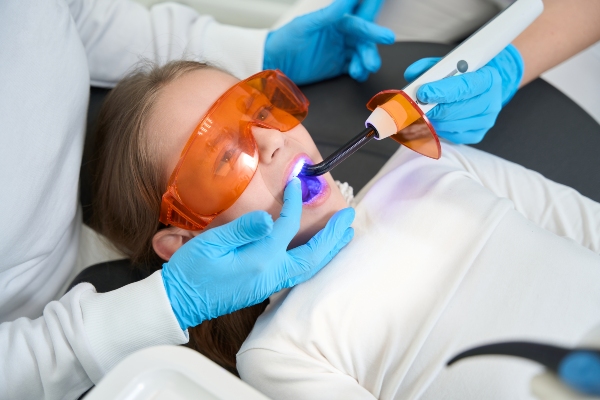How an Orthodontist Can Improve the Function of Your Mouth

Orthodontic care from an orthodontist is not just about achieving a straight, attractive smile; it is also about optimizing mouth function and overall oral health. In this review, we discuss how treatment from an orthodontist can help improve mouth function.
What are common mouth function issues and symptoms?
Mouth function issues are relatively common and can arise for various reasons, such as malocclusion, TMJ disorder, bruxism, a malformed palate, and missing teeth. These issues can impact how a person speaks, chews, and maintains oral health. These issues often exhibit distinctive signs and symptoms, making early detection crucial for effective intervention. Common ones include:
- Pain or discomfort
- Difficulty chewing
- Difficulty swallowing
- Speech issues
- Limited mouth opening
- Jaw clicking
- Lockjaw
- Headaches
Patients should seek intervention from their orthodontist if they exhibit any of these symptoms for an extended period. There are effective orthodontic treatment solutions in almost every case.
How an orthodontist can treat function-related oral concerns
Orthodontic treatment is more than just braces or clear aligners. A patient must go through several steps to fix issues that contribute to function-related problems. These include:
- Early orthodontic care
- Tooth extraction and spacers
- Braces and clear aligners
- Retainers
Early orthodontic care
Early orthodontic care, often referred to as interceptive or pediatric orthodontics, targets children as young as seven years old. At this age, a child's mouth is still developing, making it an opportune time to identify and rectify issues before they become more challenging to manage.
Early orthodontic treatment typically involves the use of appliances like palatal expanders, early braces, or space maintainers. The exact treatment plan varies depending on the child's unique needs and their age. Regular check-ups with an orthodontist help monitor progress and make necessary adjustments.
Overall, early orthodontic care is pivotal in setting the foundation for improved mouth function. By addressing dental and jaw issues in their early stages, children can enjoy better oral health, enhanced facial aesthetics, and increased comfort when biting, chewing, speaking, and breathing.
Tooth extraction and spacers
Tooth extraction may sound daunting, but it is a strategic step in orthodontic treatment designed to create space within the mouth. It helps address overcrowding and alignment issues and allows for more effective braces or clear aligners treatment.
Spacers or separators are often used to maintain the space created by the missing tooth or teeth, or they may be used without tooth extraction. These small, unobtrusive devices are inserted between adjacent teeth. They help prevent drifting before braces or clear aligners treatment.
Braces and clear aligners
After the initial phases of early orthodontic care and potentially, tooth extraction and spacer use, the next steps in the journey toward improved mouth function often involve using orthodontic appliances like braces and clear aligners. Braces are one of the most traditional and effective orthodontic treatments. They consist of brackets attached to each tooth, connected by wires and bands. They apply controlled pressure to move teeth into their desired positions, addressing issues like misalignment, crowding, and irregular spacing.
Clear aligners offer a discreet and convenient alternative to traditional braces. They consist of a series of removable, custom-fitted trays. They are nearly invisible, enabling individuals to straighten their teeth with minimal impact on their appearance.
The choice between braces and clear aligners depends on individual needs and preferences. An orthodontist will assess the patient's specific issues, treatment goals, and lifestyle factors to determine the most suitable option. In general, braces are recommended for patients with more severe alignment concerns.
Retainers
After the completion of orthodontic treatments like braces or clear aligners, the final step in preserving optimal mouth function and a healthy smile often involves the use of retainers. These devices play a crucial role in ensuring that the results of orthodontic work endure over time.
Retainers help stabilize teeth in their newly aligned positions. Without retainers, there is a tendency for teeth to gradually shift back to their original positions over time. Orthodontists recommend wearing retainers for as long as possible to ensure the stability of the orthodontic results. Regular follow-up appointments with the orthodontist are essential to monitor progress and make any necessary adjustments to the retainer.
Need an orthodontist? Call us today
If you or your child need orthodontic care to help improve mouth function, the appearance of their smile, and oral health, contact us today. We help patients achieve their ideal smiles with improved alignment, and we make the process fun and easy for individuals of all ages.
Request an appointment here: https://www.grandparkwaypediatricdental.com or call Grand Parkway Pediatric Dental at (832) 579-0960 for an appointment in our Richmond office.
Check out what others are saying about our dental services on Yelp: Orthodontist in Richmond, TX.
Recent Posts
Dental fillings for kids are simple, straightforward procedures from pediatric dentists that help preserve teeth, promote healthy development, and prevent other issues. It is natural to be nervous about taking your child in for dental procedures, especially tooth decay treatments. In addition to knowing your child is in good hands, understanding the procedure and why…
Dental fillings for kids restore the smile for years to come. Proper aftercare and consistent oral hygiene help to ensure your child gets the most out of their fillings. Thankfully, caring for these restorations is simple and straightforward, particularly with the help of a pediatric dentist.A dental filling is a dental restoration that “fills” cavities…
Children's tooth care starts long before the first toothache, and thoughtful care helps prevent sensitivity and protect growing smiles. When toothaches or sensitivity appear, they cause worry for children and parents, but clear guidance and prompt care keep problems from escalating.Toothaches signal that something in the mouth needs attention. In children, discomfort may show up…
Dental fillings for kids provide many advantages. It is natural for parents to ensure their children’s comfort. Fillings can improve a decayed tooth’s function and appearance. It can also keep more dental decay at bay. Here are the details on how dental fillings for kids can prevent dental decay from worsening.All parents want their children…


